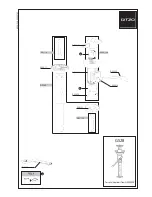Summary of Contents for ZOOM REFLEX P1
Page 1: ... vnNV V 1 NOll an LSNI ...
Page 3: ...7 I l BOLEX ZOOM REFLEX P1 CAMERA INSTRUCTION MANUAL ...
Page 36: ... ...
Page 1: ... vnNV V 1 NOll an LSNI ...
Page 3: ...7 I l BOLEX ZOOM REFLEX P1 CAMERA INSTRUCTION MANUAL ...
Page 36: ... ...

















